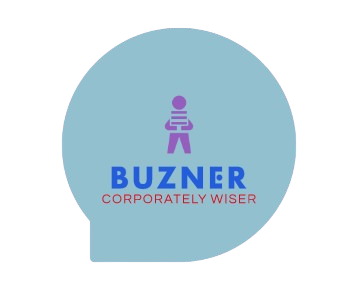Inflation, the gradual uptick in the cost of living, has substantial repercussions for personal finances. This guide provides an in-depth examination of how increasing inflation rates influence individuals’ savings, investments, and purchasing power. By understanding these dynamics, readers can better prepare and safeguard their financial well-being in an inflationary landscape.
Understanding Inflation
1. Defining Inflation.
At its core, is the gradual and sustained increase in the general price levels of goods and services within an economy. It’s a phenomenon that affects the purchasing power of a currency over time. There are several forms of inflation, ranging from mild to extreme, each with unique characteristics.
- Inflation and Its Forms: Inflation can manifest in various ways, including creeping inflation, where prices rise gradually and predictably; walking inflation, which involves slightly accelerated price increases; galloping inflation, characterized by rapid price surges; and hyperinflation, an extreme scenario where prices spiral out of control. Understanding these distinct forms is crucial for comprehending their impact on personal finances.
- Measuring and Targeting Inflation: Central banks play a pivotal role in managing inflation. They employ tools like the Consumer Price Index (CPI) and the Producer Price Index (PPI) to measure inflation rates. Central banks often aim to maintain a target inflation rate, typically around 2%, to strike a balance between economic stability and growth. This section elucidates the methods used by central banks to control and regulate inflation, shaping the financial landscape for individuals and businesses.
2. The Inflation-Related Factors
Inflation-Related Factors Inflation doesn’t occur in isolation; it’s often driven by a complex interplay of economic forces. Two fundamental factors contributing to inflation are demand-pull and cost-push inflation.
- Demand-Pull Inflation: This form of inflation arises when the demand for goods and services in an economy outpaces its supply. As consumers and businesses collectively increase their spending, demand surges, driving prices upward. An analysis of how increased consumer confidence, economic growth, or expansionary fiscal policies can fuel demand-pull inflation provides insights into its occurrence and effects.
- Cost-Push Inflation: Here, inflation is driven by rising production costs, such as increased wages or higher prices for raw materials. Businesses often pass these added expenses onto consumers in the form of higher prices. Examining factors like supply chain disruptions, energy price fluctuations, and labor market dynamics elucidates the mechanics of cost-push inflation.
Monetary Policy and Inflation Control Central banks play a pivotal role in managing inflation through monetary policy. By adjusting interest rates and regulating the money supply, they can influence inflation rates. This section delves into the intricacies of how central banks wield monetary policy tools to curb inflationary pressures and maintain economic stability.
Impact on Personal Savings
3. Erosion of Purchasing Power
Understanding Inflation’s Effect on Money’s Real Value Inflation is a slow and stealthy wealth eroder. The first aspect we’ll explore is how it steadily diminishes the real value of money.
- The Inevitable Erosion: Inflation reduces the purchasing power of money over time. This means that the same amount of money can buy fewer goods and services as inflation climbs. Unveiling this process, from its causes to its consequences, provides individuals with a clear picture of how their money’s worth is slowly slipping away.
- The “Inflation Tax” on Savings: Often referred to as the “inflation tax,” this concept highlights how inflation can negatively impact savings. When the interest earned on savings doesn’t outpace inflation, savers effectively lose money in real terms. We’ll delve into strategies to protect savings from this hidden tax and make money work for, not against, financial goals. Understanding these aspects is crucial in the battle to preserve and grow wealth amidst inflationary pressures.
4. Savings Account and Fixed Deposits
- Low-Interest Rates vs. Inflation: Savings accounts, often considered a safe haven for funds, can face a harsh reality when inflation rates rise. In this section, we’ll explore how low-interest rates on savings accounts can be eroded by inflation.
- The Saving Dilemma: While savings accounts provide liquidity and security, their interest rates typically lag behind inflation. When inflation outpaces these rates, the real purchasing power of your savings decreases. We’ll discuss the ins and outs of this scenario, ensuring readers understand the importance of not letting their money sit idly.
Strategies for Beating Inflation with Fixed Deposits
Making Fixed Deposits Work for You: Fixed deposits are a popular choice for conservative investors. In this part, we’ll delve into strategies for optimizing savings in a high-inflation environment.
- Understanding Fixed Deposits: Fixed deposits can offer better interest rates than regular savings accounts. We’ll explore how these instruments work and their potential advantages in combating inflation.
- Inflation-Beating Strategies: To stay ahead of inflation, we’ll discuss techniques such as laddering fixed deposits and exploring special inflation-linked deposit schemes. These strategies empower individuals to make their money work harder in the face of rising prices.
5. Emergency Funds and Inflation Protection
- Why Inflation Matters for Emergency Funds: Inflation can stealthily erode the financial safety net provided by emergency funds. In this section, we’ll emphasize the importance of maintaining emergency funds that are adjusted for inflation.
- Inflation’s Impact on Emergency Funds: We’ll explain how the rising cost of living can reduce the real value of emergency savings over time. Readers will understand why building inflation-adjusted emergency funds is essential for financial security.
Diversifying Savings to Beat Inflation
The Power of Diversification: Diversifying savings is a crucial strategy to mitigate inflation risk. In this part, we’ll explore how diversification can help protect savings from the erosive effects of inflation.
- Asset Allocation Strategies: We’ll discuss various asset classes, including stocks, bonds, and real assets, that can serve as hedges against inflation. Readers will gain insights into how to create a diversified investment portfolio that can outpace rising prices.
- Balancing Risk and Reward: Diversification isn’t without risks. We’ll provide guidance on finding the right balance between risk and reward based on individual financial goals and risk tolerance.
Impact on Personal Investments
6. Stocks and Bonds
- Inflation and Stock Market Performance: This section will delve into the intricate relationship between inflation and the stock market. We’ll discuss how inflation affects different sectors and industries, providing examples of stocks that historically performed well during inflationary periods.
- Winning and Losing Sectors: Readers will gain insights into which sectors tend to thrive during inflation and which ones face challenges. We’ll offer advice on how to align stock investments with the prevailing inflationary trends.
Bonds: Rising Interest Rates and Investment Outcomes
Rising Interest Rates: Here, we’ll examine how rising interest rates can influence bond investments. We’ll cover the mechanics of bond pricing and how changes in interest rates impact bond yields and values.
- The Inverse Relationship: We’ll explain the inverse relationship between bond prices and interest rates, helping readers understand why bond prices fall when rates rise and vice versa.
- Strategies for Bond Investors: This section will provide strategies for bond investors to navigate an environment of rising interest rates, including considerations for bond maturities and diversification.
7. Real Assets and Inflation Hedge
- Real Assets as Inflation Hedges: In this section, we’ll explore the role of real assets, such as real estate and commodities, as effective hedges against inflation. We’ll discuss how these assets tend to appreciate in value as prices rise, preserving the investor’s purchasing power.
- Real Estate: Readers will gain insights into how investing in real estate can provide a reliable shield against inflation. We’ll discuss the potential benefits of residential and commercial real estate investments.
Investing in Inflation-Protected Securities (TIPS)
Preserving Buying Power in an Inflationary World: This part of the guide will introduce readers to Treasury Inflation-Protected Securities (TIPS) and their role in safeguarding investments from inflation’s erosive effects.
- Understanding TIPS: We’ll provide a clear explanation of how TIPS work, including how they adjust for inflation and ensure the real value of the investment remains intact.
- Incorporating TIPS into Your Portfolio: Readers will learn how to strategically include TIPS in their investment portfolios to mitigate inflation risk and secure their financial future.
8. Asset Allocation Strategies
- Diversification: We’ll discuss the benefits of diversifying investments across asset classes, including stocks, bonds, real estate, and commodities. Readers will understand how this approach can help spread risk and potentially enhance returns in inflationary periods.
The Concept of “Real Return” Investing
Real Returns: Beating Inflation at Its Game: In this part, we’ll introduce the concept of “real return” investing, emphasizing the significance of investments that outpace inflation.
- Understanding Real Returns: Readers will gain a comprehensive understanding of what real returns mean and why they matter. We’ll explain how this concept relates to the purchasing power of investments over time.
- Strategies for Real Return Investing: This section will provide practical strategies and investment options that aim to generate real returns, ensuring that investments grow ahead of inflation, not behind it.
Impact on Purchasing Power
9. The Cost of Living
Managing a Rising Cost of Living
The Direct Impact of Inflation on Everyday Expenses: This part of the guide will shed light on how inflation directly affects various aspects of daily life, from groceries to healthcare, housing, and education.
Inflation’s Reach into Daily Life: We will discuss real-life examples of how inflation affects the prices of essential goods and services, highlighting its impact on household budgets.
Strategies for Managing a Rising Cost of Living
Safeguarding Your Finances: In this section, we will explore practical strategies for individuals and families to navigate a world with increasing costs.
- Budgeting and Expense Tracking: Readers will learn how to create and stick to a budget, track expenses, and identify areas where they can cut costs.
- Income Enhancement: We’ll discuss ways to boost income through various means like side hustles, investments, or career advancements.
- Investment in Education: Highlighting the importance of continuous learning to stay competitive in a changing job market and potentially increase earning potential.
10. Salary and Wage Adjustments
We will delve into the art of negotiating salaries and wages that keep pace with inflation:
- Understanding the Need for Adjustments: We’ll explore why it’s crucial for employees to advocate for salary adjustments that align with rising living costs.
- Negotiation Strategies: Readers will learn effective negotiation tactics for discussing compensation increases with employers, taking into account inflationary pressures.
The Importance of Career Development and Side Income
Here, we will emphasize the significance of career growth and diversified income sources in combating the erosion of purchasing power:
- Investing in Career Development: Highlighting the role of upskilling, professional development, and seeking opportunities for career advancement to secure higher-paying positions.
- Exploring Side Income Streams: Discussing the potential of side hustles, freelance work, or passive income sources to supplement primary earnings and mitigate the impact of inflation.
11. Budgeting and Inflation
We will discuss how individuals and households can adapt their budgeting practices to effectively deal with the impact of inflation:
- Recognizing Inflation’s Effects: We will explain how inflation gradually erodes purchasing power and affects the cost of living, emphasizing the need for budget adjustments.
- Revising Expense Categories: Readers will learn how to reassess and potentially reallocate funds within their budget to accommodate rising prices, including essentials like housing, groceries, and transportation.
Creating a Flexible Budget to Adapt to Changing Prices
This part will focus on constructing a budget that remains resilient in the face of fluctuating prices:
- Building Flexibility: We will outline strategies for creating a budget that allows for adjustments as inflation rates change, ensuring financial stability over time.
- Emergency Fund Planning: Discussing the importance of emergency funds as a cushion against unexpected financial challenges caused by inflation or other economic factors.
Planning for the Future
12. Retirement and Inflation
In this section, we will explore the enduring impact of inflation on retirement planning:
- Inflation’s Erosion of Savings: We will explain how inflation can significantly reduce the purchasing power of retirement savings over time, potentially jeopardizing financial security in retirement.
- Adjusting Retirement Goals: Readers will gain insights into reevaluating their retirement goals and expectations in light of inflation, with an emphasis on long-term financial sustainability.
Strategies for Building a Retirement Nest Egg That Can Withstand Inflation
This part will focus on proactive strategies to safeguard retirement funds against the effects of inflation:
- Diversified Investments: We will discuss how diversifying a retirement portfolio with inflation-resistant assets like real estate and inflation-protected securities (TIPS) can help mitigate inflation risks.
- Regular Monitoring and Adjustments: Advising readers on the importance of regularly reviewing and adjusting their retirement plans to adapt to changing economic conditions, including inflation.
13. Inflation Expectations
In this section, we will delve into the significance of inflation expectations in shaping financial planning:
- Understanding Expectations: We will explain what inflation expectations are and why they are crucial for making informed financial decisions, including investments and savings strategies.
- Economic Indicators: Readers will learn about key economic indicators that influence inflation expectations, such as consumer sentiment, central bank policies, and market trends.
Tools and Resources for Tracking Inflation Rates and Forecasts
We will provide readers with practical tools and resources to stay informed about inflation rates and forecasts:
- Inflation Tracking Websites: We will recommend reputable online sources and websites where individuals can access real-time inflation data, historical trends, and future projections.
- Utilizing Financial Apps: Readers will discover how financial apps and tools can simplify the process of monitoring inflation and its potential impact on their financial goals.
Conclusion: Navigating Inflation’s Challenges
Inflation is a persistent force that impacts every aspect of personal finance. To thrive in an inflationary environment, individuals must adopt proactive strategies, including diversifying investments, preserving purchasing power, and seeking out inflation-protected assets. By understanding and preparing for inflation’s impact, individuals can safeguard their financial well-being and achieve long-term financial security.
As we move forward, let us remember that inflation is not an insurmountable obstacle; it is a challenge that can be met with informed and strategic financial planning.









